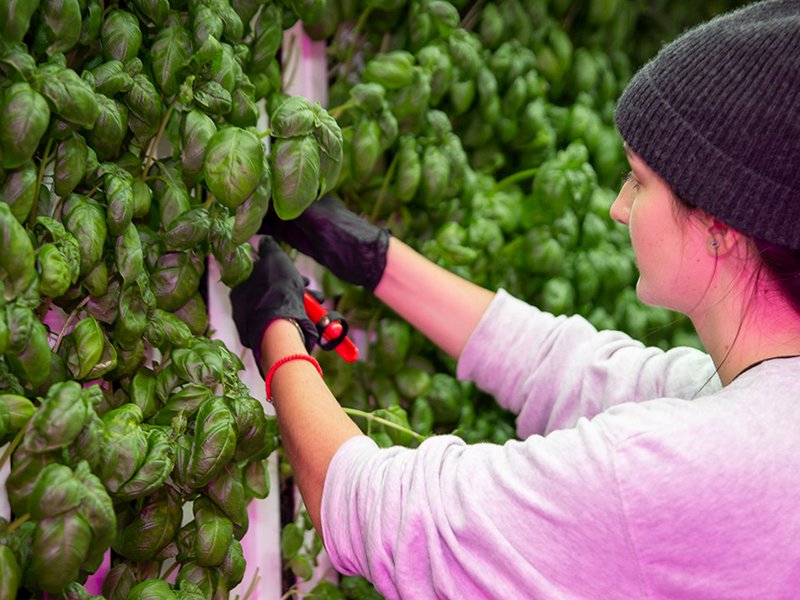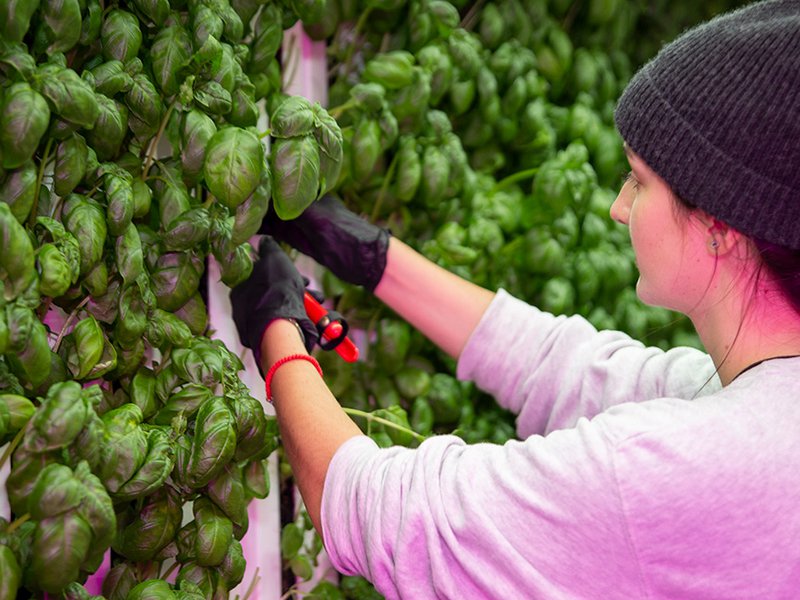
John Kohl is no stranger to local food. For the CEO of Detroit-based, family-owned regional food distributor Atlas Wholesale Foods, buying and selling locally has always been business as usual.
“There’s a certain Michigan pride that we all have when we know there’s a local vendor we can purchase from,” said Kohl. “There’s a strong community on the food manufacturing side in this area, and we all share customers and relationships within that ecosystem.”
Because Atlas, which was founded by Kohl’s grandfather in 1939, has always procured local foods, it’s been in a good position to meet the rise in demand for local products. Kohl said the firm places more emphasis on awareness and transparency about the local products already on offer these days.
Kohl is now seeing restaurants aspiring to fill their menus with local food. He pointed to longtime Atlas customer Shield’s Pizza, which recently redesigned its menu to highlight local ingredients with Kohl’s help.
“A place like Shield’s has been around Detroit forever, and has been buying local products for just as long,” Kohl said. “But now customers are starting to care about where their food comes from, so they are putting that at the forefront.”
The last decade has seen a swift rise in the local food movement across the nation and in Michigan. And while much of that growth has happened in the direct-to-consumer arena, more food distributors are getting on board with the local movement (or, like Kohl, marketing what they have already been doing).
In 2015, Kohl received a $100,000 USDA grant to help build up his company’s capacity to increase sales and consumption of local food. The project focused on building systems for transparency and tracking, streamlining logistics and improving marketing. At the end of the two-year project, Kohl reported a 55 percent increase in the number of Atlas customers buying local products.
Direct food sales include a variety of marketing channels, including direct-to-consumer (such as farmers’ markets, community supported agriculture and online sales), direct sales to retailers such as grocers and restaurants, institutions like universities and hospitals, and intermediaries like food hubs, auction houses, wholesale and terminal markets and distributors.
In 2015, local food sales in Michigan were valued at $459 million, according to USDA. That represented 5 percent of the total local food sales market nationwide, second only to California. The vast majority of these sales were made within 100 miles. Institutions and intermediaries accounted for the largest share of sales, 39 percent, bringing in $3.4 billion.
And the trend is projected to grow. Market research firm Packaged Facts predicts local food sales will jump from $12 billion in 2014 to $20 billion in 2019. This means big food companies are finding themselves in a new food marketing landscape.
“People want healthy, clean food, and they want local,” said Dan Carmody, president of Eastern Market Corporation. “When Kraft Heinz sells off $15 billion worth of their market valuation because the brands are worth less than they used to be, it’s a recognition of a fundamental shift in consumer demand.”
Grand Rapids-based food distributor Gordon Food Service is responding to local food demand on several fronts.
“We’re getting more and more demand from our customers for local food,” said Jane Feenstra, stewardship specialist at Gordon Food Service.
Feenstra points to GFS’ NearBuy solution, which it launched nearly a decade ago. The database allows local buyers to identify and track local purchases using a variety of definitions for local (e.g. mileage radius, within-state, or within-region).
Not only does this tool help customers connect with local sources, Feenstra noted, but it also helps with documentation required for GFS’ customer participation in sustainability certification programs like Health Care Without Harm or AASHE STARS.
In late March, GFS announced its first urban farming campus in Wyoming, Mich., in partnership with Square Roots, a Brooklyn-based urban farm technology provider. Ten hydroponic shipping container farms are projected to produce more than 50,000 pounds of herbs annually, which will be made available to nearby GFS customers in retail centers such as the new GFS Detroit grocery store.
“We’re really excited about it because this partnership is unique in scale and size,” said Feenstra. “It brings technology, agriculture and an entrepreneurship model together.”
Larger distributors are getting in the game as well. Byron Center, Mich.-based grocery wholesaler SpartanNash supplies more than 2,100 grocery retail sites throughout the U.S. and runs 155 corporate supermarkets in nine states. The company started ramping up its local procurement program in 2016.
“We have known for some time that local and organic food demand was growing and outpacing the total, but in recent years they have exploded in growth,” said Lori Raya, chief merchandising and marketing officer for SpartanNash. “Of course, when we see these trends, we dig deeper, looking for more products to meet the customer’s needs.”
SpartanNash created its own definition for local, counting “local grown” and “locally made” as any product that was grown or produced in the same state as the retail store, or within 100 miles of the store if it crosses over the border into another state.
“We carry more than 2,300 local items in our stores,” Raya said. “Since 2016, we’ve seen positive annual growth of around 2.5 percent and have shipped approximately 3.5 billion pounds of product to stores all over the state. This equates to more than 196 million cases of local product, with everyday items that most people have in their homes.”
Shifting to more local sourcing is not without challenges for a large distributor like SpartanNash.
“One of the biggest challenges when working with emerging local food entrepreneurs — which is where many of the newest and most exciting items are found — is that they may not be at full production yet and find it difficult to scale to the size of our retail demand,” Raya said. “We have worked through this by piloting new products or companies in a few stores, and then growing with them as their manufacturing capacity rises.”
And while local products may command a small price premium, SpartanNash has not seen this as an obstacle.
“Often, the pricing is higher due to economies of scale versus national companies, but this hasn’t been a deterrent for most of our customers,” said Raya. “They will pay a little more to support local companies.”
Raya sees a significant role for large distributors like SpartanNash in the growth of the local food economy into the future.
“Cutting out the middle man can reduce cost on a small scale, but simple dynamics dictate that as the product spreads beyond its home neighborhood or town, it actually saves money to distribute on a larger scale distribution platform,” she said. “SpartanNash can reach stores much further away, helping local companies drive down costs as they ramp up production and volume.”

